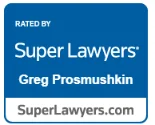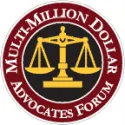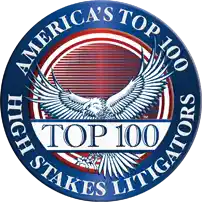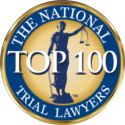Owing to advanced technology, there has been a boom in the number of autonomous and semi-autonomous vehicles. The design of autonomous cars is such that they are safe and convenient. However, autonomous driving technology can still fail, and the technology is not yet highly regulated.
The outcome can result in catastrophic collisions causing fatal or serious injuries. Because the law of autonomous driving is still developing, confusion arises over who will be liable for damage caused by autonomous and semi-autonomous car collisions.
A car accident lawyer in Philadelphia may help you determine the liable parties and pursue compensation for the damages.
Will autonomous cars reduce accidents?
There are many safety benefits of autonomous vehicles and different types of automated technologies such as advanced driver’s assistive system technologies. Future automated driving systems have enormous potential to reduce vehicle accidents, saving lives and preventing injuries.
Who is at fault in self-driving car accidents?
It is challenging to determine liability for semi-autonomous cars or autonomous car accidents. The parties that can be potentially liable are as follows:
- A vehicle owner who is driving an autonomous vehicle;
- The Vehicle Manufacturer;
- A Third-Party (government agencies, manufacturers of vehicles) .
There are no precise laws for determining liability in self-driving car accidents. Liability will vary based on the cause according to common law principles.
A driver who is driving an autonomous vehicle
Car accident lawsuits turn on the negligence of the drivers. It is clearly understood that if a collision occurred due to the recklessness of a driver, they will be liable for damages.
Fully autonomous vehicles still do not exist, and drivers must be careful to take control of the vehicle when software gives them alerts, by using emergency braking or otherwise assuming control of the vehicle. In case the driver fails to control the vehicle in a dangerous situation, they may be responsible for any accident that follows.
Manufacturer
If the cause of the autonomous vehicle accidents is some defect in the software or the vehicle, the manufacturer may be liable for damages. You can better understand this by an example. In case the software fails to alert the driver to danger and to prompt him to take control when on autopilot feature, liability may fall on the manufacturer.
Third-party Liability
Potentially liable third parties can include a government agency, if some improper road condition caused the accident, or another driver whose negligence, speeding, or traffic violations became the cause of the autonomous vehicle accident.
In many cases, manufacturers may try to shift the blame to the driver as current autonomous cars are only assistive, and do not fully replace driver control and responsibility. Many crashes occur due to software defects which are revealed when accidents are investigated. The evidence of software or other defects will act as proof of a mistake by the manufacturer of the autonomous vehicle.
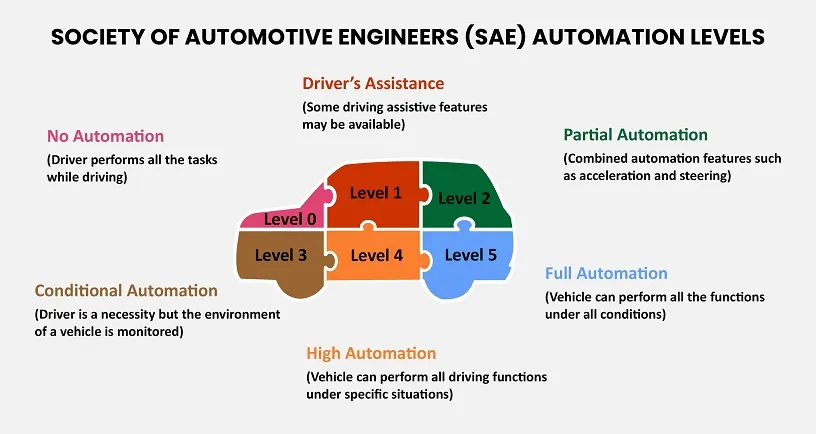
Autonomous car accident statistics
In 2021, there were more than 1,400 self-driving motor vehicles such as cars, trucks, and other vehicles being actively tested. Autonomous vehicles are much less safe than conventional ones. The number of crashes caused due to autonomous vehicles (AVs) was 9.1 crashes per million miles traveled in comparison to 4.1 crashes per million miles traveled for conventional cars.
According to the National Highway Traffic Safety Administration (NHTSA), there have been 5 generations of safety equipment over the last 75 years of automotive design.
| Year | Safety Features |
|---|---|
| 1950-2000 | Cruise control, antilock brakes, and seat belts |
| 2000-2010 | Electronic stability control, blind spot detection, forward collision warning, and lane-departure warning |
| 2010-2016 | Rearview video systems, automated emergency braking, rear cross-traffic alert, and lane-centering assist |
| 2016-2025 | Lane-keeping assist, adaptive cruise control, and traffic jam alert |
| 2025+ | Fully automated safety features |
In Pennsylvania, you may have two different options after you have been involved in an autonomous vehicle accident. Your choices depend entirely upon which auto insurance policy you have purchased. In Pennsylvania, a motorist must choose between full tort and limited tort auto insurance.

